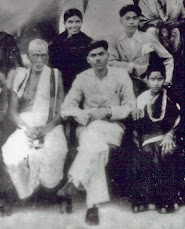The basic brick of all interpersonal interaction is the relation between ‘I’ and the other ‘I’.
In reality, there is only one ‘I’. This is not a philosophic speculation. When you say that some person insulted you, what you know is nothing more than what your senses have reported to you and all that has happened within you. It is obvious that your senses could have only filtered a fraction of the totality represented by the other person. Your disturbance that your perceptions raise within you is your behavioural reality. To the degree you learn to handle this disturbance within you is the degree to which you will be effective in meeting the so-called external source of disturbance. As long as the ‘I’, the owner of ‘its’ body does not recognise that the disturbance is first of all within itself, perhaps, damaging its subtle mechanisms, the ‘I’ will react to the external ‘I’, arousing a mutually destructive action-reaction stereotype which amplifies the problem.
If this basic fact is remembered, then the ‘I’ might be interested to learn a more satisfying mode of response.
Each ‘I’ is a complexly reflecting and reverberating unit. Multiple reflections of hate or love can have laser like effects on a larger area than encompassed by the two persons.
No amount of moral preaching can stimulate a person to effective behaviour as can the recognition of the basic fact of the ‘I’ and ‘ITS BODY’.
Reaction is the apex of biological behaviour. Action is the beginning of human behaviour.
In human society, ‘I’ + ‘I’ can be equal to nxI, ‘I’ + ‘I’ may be equal to I divided by n, where n is a positive number, depending on how they deal with the addition - mutual strengthening or mutual detraction.
Laser effects are implicit in you.











